












At AARP Family Caregiving, we’re here to help you get answers, connect with other family caregivers and find local resources close to home. So you can take care of what matters most.
To learn more, visit aarp.org/caregiving.

tax credit would give caregivers some relief to the financial challenges they encounter.
Mike FestaAARP is fighting for America’s over 48 million family caregivers who help seniors live independently in their homes instead of being forced into nursing homes. In Massachusetts alone, there are approximately 760,000 family caregivers, who provide unpaid care to their loved ones. These caregivers assist family members or friends who may be elderly, disabled, or chronically ill, helping them with daily activities, medical needs, and emotional support.
AARP has looked into just who these people are that are providing the care. Our surveys show some family caregivers help a few hours a month while others are on call 24/7. Many family caregivers work full or part time, and some are also caring for children. We also know:
• 58% spend over 11 hours a week providing unpaid labor to an older loved one.
• Caregivers spend $7,000+ a year out of their own pockets on care-related costs.
• 42%—and 50% of female caregivers—had to leave the workforce or reduce their hours at work due to their caregiving responsibilities.
It’s easy to understand why family caregivers are stressed and often overwhelmed balancing the physical, emotional and financial demands required to care and advocate for their older loved one.
AARP has proposed a caregiving tax credit in Massachusetts to help support family caregivers. This $1500 refundable
Family caregivers are the backbone of a broken long-term care system, providing over $600 billion in unpaid labor each year, saving taxpayers billions. Without them, America’s health and long-term care systems would collapse. When seniors are able to age in their own homes, that means less people in nursing homes and smaller bills for taxpayers. Congress can help, too. Voters across the country want Congress to address family caregiving issues, according to a new AARP poll, conducted by a bipartisan polling team. This is especially true for those age 50 and older: over two-thirds of voters, and 75% of voters 50+, say it is “very important” for Congress to help seniors live in their own homes. More than half (57%) say the same for supporting unpaid family caregivers.
Ask anyone who has cared for a loved one; it’s not only financial. There are emotional aspects that can be tough, medical issues that can be challenging and day-to-day tasks that can be difficult. AARP is here to help. We have resources and information on our website, aarp.org, from helping to manage parents’ finances to building relationships with nursing home staff to taking time to care for yourself.
Caregiving can be an all-consuming experience that leaves the caregiver exhausted and lonely. But it can also be an enormously meaningful accomplishment. Half of the caregivers (51%) feel their role gives them a sense of purpose or meaning in life.
Share your story with us. Send us an email at ma@aarp.org. Help get a family caregiver tax credit here in Massachusetts. While sometimes it may feel like you are alone as caregiver, you are not. There a millions of other people caring for their loved ones. We’re happy to connect you with others.


REGION - These days, practically everyone is enjoying the use of a mobile phone app or two. Whether it’s to conveniently pay a bill or play a game, older adults are taking full advantage of these cool tools.


One of the more helpful apps are those that aid users in managing their medications. Forgetting to take prescription drugs or ordering refills is a significant problem for some people.
Medisafe, a digital health platform based in Needham offers a myriad of support in such matters. Users simply input their prescriptions and timings, and Medisafe will create a visual schedule which includes images of each pill and a list of potentially harmful side effects. Throughout the day, users will receive reminders on when to take medications, keep them informed when a prescription is running low and even alert a family member or friend of a missed dosage.
“One of the ways we can help today is with our pharmacy services,” said Medisafe team member Brian Carr. One of the company’s pharmacy service features is having medications delivered to the person’s home. Delivery is free and there is the option to cancel at any time.
How many times have you stood on the edge of




a parking lot trying to remember where you parked your vehicle? Countless times, no doubt. Google Maps’ Remember Where You Parked app is free and is available for iPhones and Androids. All you do is click on the blue dot showing your location, click “Set as parking location” from the menu that pops up and it will be saved. When you’re ready to find your way back, just click the blue “Directions” icon and select “Saved parking.” The app can also be used for navigation to somewhere new or if you get lost while driving.
Park ‘n’ Forget is available for iOS and costs $0.99 per month. This GPS-based app is also ideal for anyone who has trouble remembering where they parked. Park ‘n’ Forget tracks your movement from vehicle to destination and helps retrace your steps. The app will even update you 15-minutes before your parking time expires if you are parked in a metered space.
Another handy tool is the LastPass Never Forget a Password Again app, which is free and available for iPhone and Android. We are living in a time where passwords are needed for almost anything and everything. Although you may want to use the same password for everything, sometimes it’s just not that simple. LastPass stores all of your passwords securely and can autofill them into websites you frequent and can even create strong passwords for you after having run out of ideas.
It is imperative to budget almost religiously when living on a fixed income. That’s where a free financial app like Mint comes in. Available on iOS and Android, Mint allows you to monitor your bank accounts, bills, credit cards, investments and even helps you budget weekly/monthly expenses, giving suggestions on where to cut back.
If you are 50 years old or older, the Sciddy app presents a wide range of good discounts on everything from food to health to home services and travel. Users can do a search according to business type or activate alerts which notify you once you enter the premise of a discount establishment. Download is free and it is available for iOS and Android.
By now, everyone is at least familiar with the GoodRx commercials. This “save money on prescription” app helps users compare prescription drug prices at various pharmacies. The app will also alert you when a particular medication drops in price. Generic drugs often cost less using GoodRx.
Mobile phone apps can help you with common tasks ranging from when to take your medications to where you parked your car.
REGION - Yoga has evolved over time into a sundry of practices. Take your pick from mere strength training poses to allowing cute little baby goats to prance on your back. Then there is laughter yoga, which involves more than giggles and toothy smiles. It incorporates meditation and breathing exercises as well.
No experience required
Doug Savage of Savage Laughter in Wareham stresses the importance of breathing exercises. “It releases oxygen, gets into your blood stream. There are so many studies out. It’s good for bronchitis,” he noted. “It’s good for asthma. It’s good for depression.”
He added, “If you laugh more often then you sort of build up the inner child, you are producing the feelgood hormones and you kind of foster the inner joy inside of you.”
At Savage Laughter, neither yoga attire nor mats are required. However, comfortable clothing is suggested and typical yoga and meditation sessions last around an hour and include breathing, clapping, childlike playfulness, and laughter exercises. No experience needed. Just bring a willingness to cultivate joy. Remember, laughter is a stress buffer and can be contagious.
The combination of laughter and yoga was the brainchild of Dr. Madan Kataria, a family physician in Mumbai, India, in 1995 and has grown from one small group in Mumbai to over 10,000 clubs worldwide.
Sebastien Gendry brought the concept to the U.S. when he founded the American School of Laughter in 2004.
Laughter yoga helps to improve your emotional state within minutes by releasing serotonin and endorphins from your brain cells. You are likely to find yourself cheerful throughout the day and laughing more than you normally do. It’s also like a cardio workout in that it increases your heart rate and blood circulation, thereby relaxing your muscles.
This particular style of yoga involves a series of movement and breathing exercises to promote deliberate laughter. It starts with warm-up exercises like clapping and chanting ‘ho, ho, ho’ and ‘ha, ha, ha.’ The session ends with yoga nidra, a type of relaxation.

Led by a trained laughing yoga instructor, exercises are practiced in group settings, such as a club or workshop. The average session begins with gentle stretching, simple breathing techniques, clapping, and chanting to help people relax.
Laughter yoga helps suppress stress hormones like cortisol. These effects are linked to a better mood, reduced pain, lower blood pressure, a stronger immune
Income Guidelines: $ 41,500 single / $47,400 couple
Now accepting Applications for 62 years of age and older and those that are under 62 years of age and are permanently disabled.
• Heat and hot water included
• Qualified Applicants pay 30% of adjusted income
• 24 hour emergency maintenance
• Non-Smoking Community
• Monthly activities include: exercise classes, birthday parties, book mobile, blood pressure screens and podiatry
• Manicured walking paths with garden plots
• Ideally located in Natick residential bus route



• Pets okay under 20 lbs.
Relax in Park-like setting
system, and lower stress levels and rates of depression. Experiencing a good belly laugh along with other people can create a bonding and strengthen relationships.
Among those who may find laughter yoga beneficial to clients, patients, and other constituencies are yoga and fitness teachers, psychologists and psychiatrists, marriage and family therapists, senior care workers and anyone else seeking to reduce stress in the environment.
Training for becoming a certified laughter yoga instructor requires completing a 40-hour course and generally includes:
• Learning the physical, mental and emotional benefits of laughter
• How to laugh without humor, laugh alone and how to teach others to do the same
• The history of laughter yoga
• Starting and running laughter clubs
• How to market your services to businesses
• Techniques for special groups (children, seniors and more)
• Laughter boosting techniques
There are a number of laughter yoga meetups throughout the state, including www.letslaughtoday. com. Some coaches offer online sessions on Zoom or would be more than happy to come to your next event. Laughter clubs are informal with no obligation to attend every session.
To quote Michael Pritchard, “You don’t stop laughing because you grow old. You grow old because you stop laughing.”
Comfortable
for details

REGION - The Berkshires is an enclave for art appreciation, eclectic music, and fine food. Combined with stunning scenery, a laid-back lifestyle and a few aging hippies and you’ve got a fun spot for a quick getaway.
The highlight of a weekend in the Berkshires can be a visit to the Norman Rockwell Museum in Stockbridge. Take a reminiscent journey back in time as you peruse the exhibits filled with Rockwell’s artistic genius. Walk along an historic timeline of The Saturday Evening Post covers beginning with Rockwell’s first cover in 1916. For 47 years Rockwell’s Post covers showcased American life as depicted in 323 poignant paintings.
A stroll around the lower level of the museum immerses you in a pictorial timeline of American history. Admiring the prints brings memories flooding back to bygone days.
Along with a visit to the Norman Rockwell Museum, the Berkshires have lots to offer for a getaway stay.
A preserved utopian village
Set out to enjoy a beautiful day outside and visit the Hancock Shaker Village in Pittsfield. The bucolic setting of the Shaker Village, formerly called The City of Peace, is a utopian village formed in the late 1780s.
At the height of the Shaker movement, the village community was populated by 300 Shakers and encompassed 3,000 plus acres of farmland and dwellings. The centerpiece is a uniquely designed, 1826 round stone barn that was the dairy farm hub.
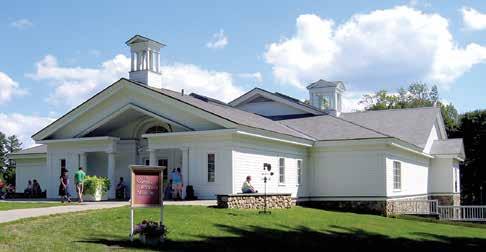
After you reach your fill of farm life, just down the road in Richmond is Balderdash Cellars winery. Select your beverage or flight and find a seat out back. On most weekends you can enjoy live music and a nosh from whatever food truck is scheduled for that day. You can also bring your own picnic to pair with your wine. Find an Adirondack chair, sip a lovely wine, and enjoy some fabulous music surrounded by green fields.
Sip local wines with irreverent
names like Tollbooth, an off-dry Riesling that pairs perfectly with something a little spicy, or Truth Serum, a rosé of grenache with a fresh salad. Liar’s Bench, Balderdash’s ruby port, is a delightful sipping dessert partner.
When you are ready to rest your head and immerse yourself in the serenely beautiful Berkshires, The Gateways Inn, a charming bed and breakfast located in the heart of Lenox, is one solid choice. The inn was built as a vacation home for Harley Procter, of Procter & Gamble, in 1912. The inviting lobby, center staircase, and elegantly casual appointed rooms offer a restful stay after ambling about town. The breakfast menu is curated with chef prepared items like a stunningly presented avocado toast or a hearty plate of tasty pancakes.
Just a short walk from The Gateways Inn is Alta Restaurant & Wine Bar. A relaxing dinner on the porch is a great spot to people watch. The salmon rillettes and foie gras terrine are plates of perfect starter bites. Entrees are listed with a suggested wine pairing, taking the guesswork out of what to eat and drink. Chef-driven menu items like roasted chicken Statler with Berkshires | 11
• We are very experienced licensed audiologists who have been in business for 37 years. We actually care about you hearing better.
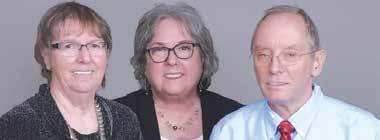
• Before you purchase hearing aids online, over the counter, from a big box store, or a TV ad, give us a call and make an appointment for a CONSULTATION.
• You may just discover you can get hearing care, AND hearing aids from LOCAL professionals for reasonable or the same pricing
• Give us a call at one of our three locations before you commit.
“When you can’t hear, we listen.”
www.audiologyaffiliates.org
REGION - Habits are challenging to break. They occur once a pattern has been established and repeated over time. Changing them requires some effort and conscious decisions in order to break the habit and replace it with something more desirable. People vow to develop healthier habits, like cleaner eating, stopping smoking, getting more exercise, less clutter, less time spent on electronic devices, and more.
There are ways to break bad habits for a healthier future but like anything else, this can sometimes be hard. Simply acknowledging that you have a bad habit that needs to be broken is a start. Then, you can start to create a plan to change that habit and replace it with something healthier for you.
Regardless of the habit that you are trying to rid yourself of, the first step is clear. You must acknowledge that this habit is not serving you well and decide you want to change or eliminate it.
Understanding why you engage in this habit can also play a part in helping to undo it. Sometimes imagery can
also be productive. What will it look like to replace a bad habit with one that results in a healthier habit? This can be done with food, technology, clutter, spending and more.
Writing down your goals as a plan can help you get the results you are hoping to achieve. You can even share these goals with those you interact with, and they can help to play a pivotal role in helping you achieve your success. Since habits take a long time to establish themselves, be patient and understand that breaking any habit takes some time. We are all human and it is likely that this reprogramming
will take effort and time. There might also be instances where you fall back, temporarily, until the new habit is fully established. That is okay. Simply acknowledge that progress that has been made so far and then continue to move forward.
It is also perfectly okay to ask for help. Sometimes enlisting the help of a coworker, friend, spouse, family member or even caregiver can make the difference with the change that you would like to see happen.
“For me, in real estate, you have to be accessible all of the time,” said Claire Shomphe of Housatonic Real Estate. “Looking at using my iPhone as work vs. social is challenging. I am working
with a therapist to help with this issue.”
“I am making changes like consciously putting my phone away thirty minutes prior to going to sleep,” she added. “I have also removed certain apps on my phone that are mindless games. This is something that not a lot of people talk about because social media is everywhere and it’s hard to get away from.”
There are habits that can severely affect your health, like smoking, and even be life-threatening, such as drug and alcohol abuse. Life-threatening habits often need professional support to help to overcome them and trying to do it on your own may be dangerous as well.

James Clear, in his New York Times bestselling book “Atomic Habits” talks about the four stages of habit―cue, craving, response and reward. He explains that your brain runs through those steps every time you engage in a habit. Being aware of them can help you begin to break the pattern.
As the old saying goes, “Bad habits are like a comfortable bed, easy to get into, but hard to get out of.”
Simply acknowledging that you have a bad habit that needs to be broken is a start.


BARNSTABLE - Everyone’s heard of George Washington, known to most as “The Father of his Country.” But who knows his far lesser-known contemporary, a feminist advocate more than two centuries ahead of her time? She is Mercy Otis Warren, sometimes called the “First Lady of the American Revolution.”
Obscure but not forgotten
Warren is not entirely forgotten, yet there’s only one statue of her, unveiled in recent times. Early American patriots were grateful for her advice and were also her friends and frequent supporters: John Adams, Thomas Jefferson, Patrick Henry, John Hancock. And yes George. And Martha, too.

“Her name rarely appears in history textbooks,” wrote Jeffrey H. Hacker in Cape Cod Magazine. But he also recalled John Adams saying that the “real American Revolution took place in ‘the hearts and minds of the people.’ ” If that’s the case, he wrote in the September-October, 2019, issue of the magazine, then she was “no less a founder of the new nation just as much as Washington, Jefferson, Madison or another friend, Adams.”
Warren was an accomplished poet, playwright, historian, pamphleteer (on a par with equaling the more well-known Thomas Paine of “Common Sense”). As tourists visit Cape Cod this summer they would do well to note the life of Warren. She was an advocate of equality for women more than two centuries ahead of her time.
‘First’ woman in many ways

She also has a series of “firsts” that include some viewing her as the


first woman to write primarily for the public rather than for herself.
Warren was encouraged by her family to be self-educated. She was a bookish girl in a time when many women never even became literate. She read voraciously at an early age: Shakespeare, Milton, Greek and Roman literature.
Some of her plays and poems bore her name, though much of what she wrote was anonymous. That was partly because she was a woman of the times, but she also risked reprisals from England’s King George for her subversive rhetoric in favor of American independence―which often mocked the British and was just as often widely-followed practical advice by her male patriot followers.
It wasn’t until 1790 that her name appeared on her crowning achievement as a writer: “History of the Rise, Progress and Termination of the American Revolution.” Adams, Jefferson and Alexander Hamilton and Thomas Jefferson all had the same word for the author of the three-volume history: “Genius.” Then President Jefferson ordered copies for himself and for every member of his cabinet. Adams termed her “the most accomplished woman in America.”
The book helped earn her the designation of America’s first female historian.
Today, for Warren enthusiasts, the Massachusetts Historical Society in Boston for more than a half century has had boxes of loose manuscripts and correspondence of the author. It’s available on microfilm in the MHS library in Boston.
Historic sites in Barnstable and Plymouth
For the more casual, the towns of Barnstable and Plymouth are places to
“What are you showing me through this?”
God’s Wisdom for Today
“Why are you putting me through this?” Consider asking Him
find her.
There are seven-foot-high bronze statutes by Cape Cod sculptor David Lewis of both Warren and her brother, James Otis Jr. They were unveiled on July 4, 1991, outside the Barnstable County courthouse.
Visitors today can see the two statues of Warren and brother James at 3195 Main Street in Barnstable. Her brother was also a sometimes-forgotten patriot.
Both brother and sister were descended on their side from Mayflower passenger Edward Doty. The pair grew up in Barnstable. But Warren spent most of her life with husband James Warren and their five children in Plymouth.
Her still-standing home is at the corner of North and Main Streets in Plymouth. It was here that she wrote her often satirical plays and her muchpraised history of the revolution. “We’re located right across the street from her home,” said Lea Filson, president and CEO of See Plymouth at 4 North Street.
The typical five million visitors to the Cape Cod area might be even high-

er this season. Vacation rental bookings on the Cape and islands continue to show significant growth from the pre-pandemic years.
Warren’s grave is also near her home in Plymouth. Burial Hill has been a famous resting place for Plymouth residents since the 1620s. The first English settlers, the Pilgrims, built their first meeting house here. It’s located on School Street and is listed on the National Register of Historic Places.
Her passing came on October 19, 1814, the 33rd anniversary of the British surrender at Yorktown. The War of 1812 was at a high pitch, and Massachusetts lay under siege once again. The 86-year-old “conscience of the Revolution” was still writing and continued to offer timely and courageous advice to others in one of her last letters.

“I would not have you think me alarmed by womanish fears or the weakness of old age,” she wrote. “I am not. I sit very tranquilly in my elbow-chair—patiently awaiting the destination of providence with regard to myself, my family, my friends, and my country.”
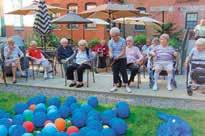
Life is uncommonly good at our Assisted Living Residence in historic downtown Gardner! We offer worry-free living at affordable rates in private apartments with services available such as:

• Daily social activities & programs


• Three chef-prepared meals daily
• Assistance with personal care needs
• Medication reminders
• Laundry & housekeeping services

• Safety checks
• Dedicated, caring staff 24/7
For more information or to schedule a tour, call Kristy Livingston at (978) 632-8292 or email info@hwcommons.com .
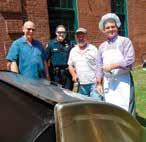
Mercy Otis Warren’s three-volume history of the American Revolution was her crowning achievement as a writer.



BOSTON - Strolling around Castle Island in South Boston can be good for the soul. You are outside surrounded by history and views of nearby Pleasure Bay. Out on the water are many sports enthusiasts, including Rolando Amorim, who rides his eFoil electric surfboard, made by Fliteboard, to the delight of many onlookers.

For three years now, Amorim has been instructing others on how to ride an eFoil and is extremely passionate about the therapeutic benefits he has achieved out on the water. He loves the sense of quiet it possesses, unlike a jet ski, and just how easy it is to operate. He compares it to yoga in the air.
“I have always been in a rush and taking out my eFoil really suits me and calms me down,” said Amorim, a Chelsea resident. “I feel like I am flying, and you can only understand this if you experience it. When I come out of the water, it actually takes me another thirty minutes or so because anyone watching wants to engage and learn more about what they just saw. I love
this interaction. I am also an instructor to many different age groups,” he noted.
He is well-known to many who have spotted him on Boston’s urban waterways like the Charles River and even Boston Harbor. He is a big personality with a zest for life. He is muscular and tanned. He makes friends and connections everywhere he goes, even with members of the Boston Police Harbor Patrol after once being reprimanded for being too close to a large vessel.
An avid outdoor sports enthusiast and competitive by nature, Amorim’s journey has challenged him to continuously reinvent himself. He was born in Brazil and hated school. He was always moving around and could not settle into a desk for any given period of time. He discovered white water kayaking which challenged him and gave him a way to release his abun-
Rolando Amorim is also a personal trainer who has coached many people preparing for bodybuilding competitions.

dance of energy and benefit from his competitive edge. From the age of thirteen to eighteen, his life revolved around competing. He was a threetime state champion, on-time second place finisher in Brazil and in South America.
“There was no internet back then and so many people would come up to me hoping I would teach them to do what I do,” Amorim explained. “I never had a lesson, but I was self-taught and learned by doing. I realized that not only did I love the athleticism of competing, but the teaching component as well.”
Those two factors would consistently play a role in Rolando’s life. After following his older brother to the Boston area, he realized he needed to make money and figure out his next move.
He worked tirelessly in a construction job during the day and as a cook

each night. Exhausted but making decent money, he realized he was not only gaining weight and smoking cigarettes, but he was getting depressed. Knowing that he was happier in Brazil, he realized why. He needed to get back to the river with his kayak and started training again. He kept his restaurant job so he would have an income stream.
He read all he could about personal training and changed his diet and lifestyle. He became a personal trainer and a few years later, at the age of thirty, he competed in his first bodybuilding show. In addition, he was training others for bodybuilding competitions.
“For me, bodybuilding was both the best and the worst thing that happened to me,” Amorim admitted. “It’s extremely physically demanding and extends to every facet of your life. No drinking, a very rigid diet and many hours of training. I did this for about four years and in 2012 I placed second in the World’s Master Natural Bodybuilder competition, which was for those over the age of forty,” he said.
After nearly twenty years as a bodybuilder, Rolando Amorim began doing yoga and is now a registered yoga teacher.

Trying to push harder no longer worked. After spending almost twenty years of his life getting big and muscular, he felt that it was never enough. Even with his rigorous training sessions, his body was not responding the same way and it was time to move on to something else.
Rolando started yoga and windsurfing but eventually found e-foiling. At the age of fifty-three, he continues to coach others and gets great pleasure from being a part of someone else’s success. He is the founder/owner of musclesculpture.com, an eFoil Fliteboard Instructor, a Pro Bodybuilder/ Pro Physique instructor and a registered yoga teacher.
“I will keep on adapting to the changes and challenges that come to me,” said Amorim. “And continue to interact with people and clients that I work with to help them achieve their goals. This, in turn, is gratifying to me,” he said.
To follow Amorim on Instagram, go to coach_rolando.
For additional information about Fliteboard eFoil lessons, his website is www.ie-foil.com.

Berkshires | from page 1
rosemary demi, parmesan couscous, and confit tomato or the orecchiette pasta with sweet pea bisque, chorizo, and butter beans will help you celebrate your Berkshire visit. Reservations are recommended even off season―
Alta is a favorite spot for locals and visitors and is always busy.
A visit to the Norman Rockwell Museum is a good centerpiece for a day trip or an overnight getaway into the beautiful Berkshires in the western part of the state.
many weekends.
A reverse mortgage gives qualified borrowers the option to receive cash as a lump sum, a monthly check, or a line of credit with NO minimum required monthly mortgage payments. The homeowner is, of course, required to pay ongoing real estate taxes, insurance and meet other loan guidelines. By not having a monthly mortgage payment, thousands of eligible homeowners have utilized a reverse mortgage to:
• Increase monthly cash flow
• Pay off a current mortgage or home equity line
• Payoff credit cards
• Pay real estate taxes & property insurance
• Complete needed home repairs or desired improvements
• Ability to pay for at home care or nursing home expenses
• Finalize divorce situations (buyout ex & keep your home)
• Pay IRS obligations
• Settle legal matters
• Use a reverse to purchase a new home
• Purchase a second home or condo in warmer weather
• Install a new septic system
• Purchase a new or used car
• Buy an RV
• Support grandchildren’s educational needs
• Gift to adult children for their home purchase dreams
• Prepay funeral expenses
• Estate & financial planning purposes
• Cash reserves for unforeseen emergency life events
• Estate planning
• Lifestyle improvement options
• Travel
• Home accessibility improvements
• Cash received is all income tax free
• Peace of mind knowing that cash is available
• And the list goes on! What are your needs and desires?
A reverse mortgage might not be the magic wand to solve all the above life challenges, but it very well could be the next best thing. Take the first step and get informed. I would enjoy the opportunity of having that conversation!
Take Action!
A great place to start is get your free “How to Use Your Home to Stay at Home” 36-page book. This is the official reverse mortgage consumer booklet approved by the U.S. Department of Housing & Urban Development and published by the National Council on Aging. To receive your free copy, please call me at (781) 724-6221 or email me at av@powhse.com
Alain Valles
Reverse Mortgage Specialist


781-724-6221
I am also available to evaluate your specific situation, answer your questions, and calculate how much money is available to you.
Alain Valles was the first designated Certified Reverse Mortgage Professional in New England. He obtained a Master of Science from the M.I.T. Center for Real Estate, an MBA from the Wharton School, and graduated summa cum laude from UMass Amherst. He is the senior reverse mortgage loan officer MLO#7946 at Powerhouse Funding Corp. NMLS #1740551. He can arrange but does not make loans. Alain can be reached directly at (781) 724-6221 or by email at av@powhse.com
REGION - Everything seems to be more expensive these days―groceries, school tuition, home purchases, gas, rent and more. So many people are impacted, especially those just starting out on their own and seniors, many of whom are retired or soon to be exiting the job market.
Rising rents are met with frustration and many housing options are just not attainable anymore.
This has had a huge impact on our aging population and is causing many hardships. In some cases, landlords are selling the building that this age group has been living in for years. All of a sudden, a new landlord comes in and sends a letter to the tenants informing them of their new rent, which in certain circumstances, the tenant can no longer afford to pay.
In an article for the Joint Center for Housing Studies at Harvard University, Jennifer Mokinsky emphasizes the fact that we, as a population, need to invest more in housing needs of our
country’s older population.
“There is an enormous unmet need for affordable rental housing for older adults,” Mokinsky wrote. “Over 10 million households headed by
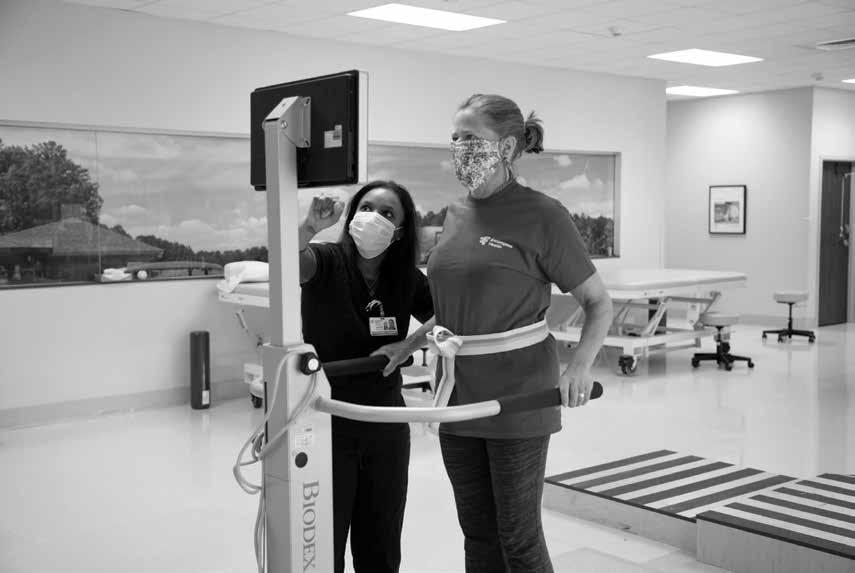
First step. First word. First hug. First dance. Every first matters, and each milestone is worth celebrating, which is why we are proud to Go Red for Women. Find your first with us for a better stroke recovery.
Learn more at ehc.rehab/fwn21
someone sixty-five and over are cost burdened (paying more than a third of their income on housing); half of these pay more than fifty percent.”
“Nearly three-quarters of renters earning under $15,000 per year are cost burdened. To compensate, households often cut back on food and medical care, which can be detrimental for those with chronic health conditions,” she continued. “Renters, often on fixed incomes, are particularly at risk of rising housing costs, and have a much smaller personal safety net.”
In some instances, the rentals that are available might not be easily accessible. The doorways might not be wide enough to accommodate a wheelchair and some modifications might need to be made. Older adults might additionally need support with their daily living and need some type of transportation to get to necessary services.
“I have been renting this apartment since 2012 and, thank goodness, I have a good relationship with my landlord,” said Betty Pulera of Lenox. “Three years ago, he came to visit, which resulted in a rent increase. While I was not happy about it, he assured me that this increase would be the last one while I resided here.”
“I will be turning 91 next month and I am grateful that my husband and I planned for our retirement,” Pulera noted. “I would suggest to the younger generations that they think about it now even though it might not feel relevant.”
As a result of the Covid-19 pandemic, many seniors lost their employment and fell behind in their rent. There were many evictions across the
country and older people were forced to move in with friends or family or face homelessness. Older renters may have exhausted their retirement savings and be living alone, where they bear the brunt of high monthly rental fees. Developers as well seem to be constructing high-end rental units that truly are not geared for an older population on a fixed or limited income.
An issue brief titled, “Low-Income Older Adults Face Unaffordable Rents, Driving Housing Instability and Homelessness” from justiceinaging. org provides additional insight. “Research demonstrates that affordable housing can improve overall health by freeing up needed dollars to pay for food and health care expenditures. Rent-burdened older adults who are paying excessive amounts of their income for housing often are left with insufficient resources for other essential needs, including food, medical insurance, and healthcare.”
There are many elderly assistance programs in Massachusetts that have taken steps to ensure aging adult economic security. This includes SNAP benefits (food stamps), economic assistance (cash benefits, Councils on Aging and Senior Centers, prescription drug assistance) and more. In the state of Massachusetts, applicants for senior housing must have an annual income no greater than 80 percent of their area’s median income.
There is a waiting list for public housing and it can take from one year to five years, depending on your application status. CHAMP (Common Housing Application for Massachusetts Public Housing) is used to apply for site-based, state-funded housing that includes both housing for the elderly and disabled as well as family housing.
The Executive Office of Elder Affairs is the state entity most focused on this issue. “EOEA is dedicated to ensuring the 1.7 million older adults in the Commonwealth have the resources they need to live and thrive in the community of their choice,” the EOEA said in a statement. “This includes ensuring older adults are financially and economically secure.”
Increasing rent puts a heavy burden on older people, especially those with fixed and limited resources. Constantly worrying about this increased monthly expense is very stressful and can lead to health problems.
For additional information go to the National Council on Aging website at www.ncoa.org or the Massachusetts Executive Office of Elder Affairs (EOEA) at https://www.mass.gov/ orgs/executive-office-of-elder-affairs.
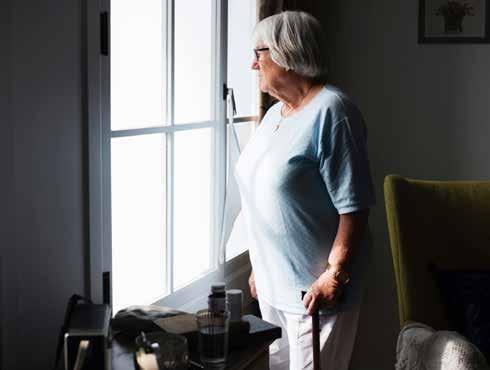
Summer is a time for cookouts and family time. I love seeing my residents get excited to see their friends and family, but it is hard to watch some interactions. I see children who cannot relate to parents, parents who cannot let their children live their lives. I see sister and brother pairs that bicker, and some that behave. I see lots of angst in so many relationships. And I also see healing.

The healing starts when all of us realize that a better relationship is important, and both parties decide to invest in making it better. But what happens when only one person cares?
There is a psychological principle called the “sunk cost fallacy” that notes the likelihood of continu-

ing to invest in a plan that is failing. Research shows that older people are less likely to continue feeling like they must continue investing. But how, if at all, does this pertain to relationships?
Research is often done on hypothetical situations such as investing in a plan or watching a movie. While researchers have noted that as people get older, they are less prone to continuing to invest in sunk costs, it is difficult to generate a real-life scenario that gets at the true investment of time as we have with our families and friends – not only the time and energy invested, but the perceived importance of the relationship.
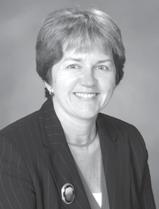
Why do people invest in certain relationships, especially if the perceived future rewards are less obvi-
ous? For some, it is a connection to who they are, their history, the rest of their family. For some, it may be filial piety, loyalty, guilt, or obligation. I would bet, however, that many people view these troublesome relationships as good, but not great.
Relationships take constant work but the first relationship that must be worked on is the one you have with yourself. A little introspection may help people determine why these life-long relationships are important. Perhaps you like your aunt, but you find her too bossy. You stay in touch because you feel you owe it to your mother. Think about how the relationship could be better for you. Are there boundaries you can put in place or ways to shift your thinking that could help?
I have a good friend who has been in my life for decades. I noticed, however, that she didn’t always answer the phone when I called, and it made me call her more. The more I called, the less she answered and the more frustrated I got. I valued (and still value) our shared history and I did not want to give up the friendship. Was I investing in a doomed friendship? Was this the sunk cost fallacy in action? Maybe, but relationships are not one-time decisions. The truth is, I valued the relationship more than my friend did. This doesn’t mean she is wrong or bad, just that we were mismatched. I could wait for her to call and still enjoy the time we had. We are not as close as I thought we were, but now it upsets me less.
The hard part for most people is accepting that you can only really change yourself and your reaction to what other people say/do. Relationships for older adults are important and we need to make the time to figure out what we need and want out of them to make them better. Sunk costs matter, but the future matters more. Make that family memory this summer, but make it a healing opportunity, too.

You can either make time or make excuses. Only one of those will move your life forward.
— Tamara Vellozzo

Little Sister was a perennial pink geranium, alone in the corner of a small garden. She was tiny and thin, but she did not give up.
She had been transplanted to an otherwise empty corner of my garden because in her first home nearby, she had been overshadowed by overzealous hostas. I hesitate to call hostas the garden bullies. Let’s just say that those exuberant bush-like plants with their salad-plate leaves grow quickly and they don’t know the strength of their own shadows.
In her new spot, Little Sister seemed to pine for her big sister, who grew across the way, near the big guys. Stubborn and bold, Big Sister proudly
displayed her pale pink five-petaled blooms. She did not fear bullies, and did not seem to miss her sister.
I am not a gardener. In fact, my attention to a plant has been known to cause its downhill slide into oblivion. But four small flower gardens were already established when we moved into our house. I wanted to do right by them. I bought the book “Gardening for Dummies” and learned just enough to know that I could be dangerous and should not attempt this without professional help.
Fortunately, my friend, whom I’ll call “Flora,” is just such a professional. I had met her in her capacity as a management consultant, and we had become friends by the time she started her gardening business.
Flora studied my garden and slipped into management consultant mode, asking the most basic management consultant question: “What’s your objective in having a garden?”
Being shy about sharing my primary motive (to not kill anything), I answered with the second: “To attract
hummingbirds, bees, and butterflies.”
I confessed to Flora that if wildflowers crept into my garden, which a real gardener would call “weeds,” it was okay with me, as long as the birds, bees, and butterflies liked them.
Flora, always the diplomat, said that was fine, if it was what I wanted and I made the conscious management decision to allow interlopers to take nourishment and space from invited inhabitants.
Flora and I moved one of the bullies (oops) to another garden a few yards away. Under that one, we had found a bunch of baby hostas and established them in their own space. We moved a couple of coral bells away from you-know-who. Here and there, we added flowering plants from a local nursery.
I say “we” because Flora is always hopeful that if she shows me what to do and how to do it, I will magically turn into a proficient gardener. She has failed. I’m a sincere but untalented pupil.
Finally, Flora moved Little Sis-


ter to that uninhabited sunny corner. She spoke softly to Little Sister, as she had spoken to all the plants. “You’ll do much better in your new home, sweetheart,” she promised.
As Flora drove away, all the plants, elderly and newcomer and especially Little Sister, cried, “Flora! Don’t leave us alone with this plant-killer!” I felt the same.
I tried not to give them too much personal attention, and they all did surprisingly well, except for Little Sister, who continued to seem depressed. One day, good news. Volunteers from Flora’s own garden would soon arrive to keep Little Sister company. Little Sister seemed to perk up, though the change was almost imperceptible. She enjoyed her new neighbors, and they all bloomed happily ever after. Well, to be honest, they all bloomed happily for a respectable while. Even with good care, “ever after” is too long for some plants. But they were lucky. If not for Flora, it might have been “never after.”
Contact jlindsay@tidewater.net.
Answers on page 19
REGION - Don’t let the name fool you. People of all ages can thrive from living in age-friendly communities. Besides, everyone ages beginning from birth. Not only are there some wellthought-out community living plans within the Commonwealth, but a focus is placed on age-friendly businesses as well. But what does being an age-friendly community mean? It’s a place that adapts its services and physical structures to be more inclusive and receptive to the needs of its residents as they age.


How do age-friendly businesses differ from any other ordinary businesses? “An age-friendly business is one where people of all ages and abilities can comfortably shop for goods and services,” said Andrea Burns, director at Age-Friendly Boston of the Age Strong Commission. “In order to be certified, businesses take a customer service training called, ‘Communicating with Older Adults.’ And we evaluate the physical spaces of the business, as well as the communica-
tion policies and hiring practices.”
Some features for such a business should include easy-to-open entry doors, a noise level suitable for hearing and speaking, and bathroom accessibility for people with mobility issues to name a few.
City of Salem a leader
In 2015, the historic city of Salem became one of the first Massachusetts municipalities to join AARP’s Network of Age-Friendly States and Communities. It also launched the Salem Skipper in 2020, an on-demand, low-cost rideshare service operated by the city. Residents can hail a ride on a Skipper van for any destination within the city by calling or by using a mobile device app. Seniors, students and people with disabilities pay $1 per trip while all others pay a fare of $2 per trip.
Salem for All Ages, the city’s 2016 age-friendly action plan, contains other proposals and in 2021, the co-chairs accomplished another achievement thanks to an ordinance allowing accessory dwelling units (ADUs). These secondary living quarters which exist on the same property
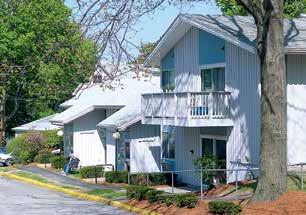
lot as a primary residence are popular since it allows family members, particularly the more senior adults, to live within close proximity to loved ones and to continue live independently.
It’s a win-win in supporting housing affordability. Check with your town’s planning or building department for information on establishing an ADU. Moreover, renting out an ADU can be an additional stream of cash flow for seniors living on a fixed income who reside in the primary residence.
underway
One pilot program, which is part of the state’s Food is Medicine plan that is being explored, involves physicians providing patients with “prescriptions” in the form of vouchers to grocery stores, farmers markets and various healthy food sources. Simple facility improvement ideas like temperature-resistant and raised armrests, seats and backs on public benches are also coming into play.
In 2020, Beverly Main Streets in Beverly launched the Blooming in Beverly program after receiving a grant from the AARP. In an effort to combat social isolation and promote
community spirit and involvement, 50 residents from the age of 50 and up were given watering cans, plants and 50 raised garden beds installed on their property.
To further advance this intentional type of living, the Massachusetts Healthy Aging Collaborative is encouraging communities to consider funding opportunities. For example, there are festivals and projects grants available from the Mass Cultural Council. The grants will support activities incorporating the arts, humanities, or sciences that provide community and/or public benefit. The program will award up to 20 cities grants of up to $25,000 each and designed to support art and nature hikes, pop-up markets, outdoor performances, small capital projects, regional food festivals and more.
Lastly, the goal of the Asphalt Art Initiative is to fund visual art on pedestrian spaces, public infrastructure in cities and roadways thus improving and revitalizing public spaces and making them safer. Such ideas and efforts to enhance the quality of life in age-friendly communities are clearly beneficial to all residents no matter the age.

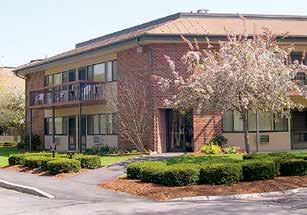
Colony Retirement Home III is congregate housing for seniors. Enjoy nutritious “Home Cooked Meals,” served in our attractive dining room with your neighbors and friends.
Colony Retirement Homes I are garden style studio apartments, located in a country-like setting. A short walk takes you to shopping centers, banks, restaurants and the bus line. A little bit of the country adjacent to the city.
REGION - Getting your driver’s license for the first time is exciting and brings a feeling of independence. As we age, renewing that license and keeping up with the responsibilities involved with driving and having a car can become overwhelming. The Massachusetts Registry of Motor Vehicles (RMV) has helped make that task a bit easier for older drivers.
“There have been many exciting initiatives that have taken place over the last 20 years at the RMV,” said Michele Ellicks, the RMV’s community outreach coordinator. This includes the Community Outreach Division, which has been in existence for several decades and helps meet the needs of older drivers. Some support they provide to seniors is helping them to renew a driver’s license or surrendering their current license and obtaining an ID card instead.
A cooperative program between the RMV and Massachusetts Councils on Aging (COA) is another initiative that is about six to eight years old.
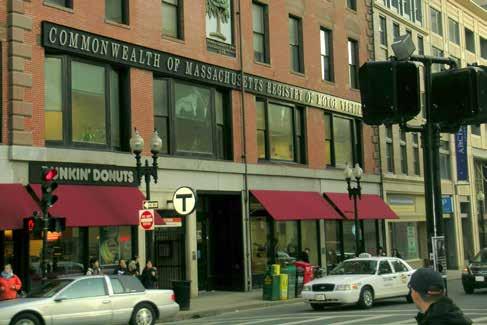
COAs are located throughout the state and are active in several programs. One, dubbed “RMV Near Me,” provides staff and volunteers training to assist seniors with online transactions. “Some older adults may not have access to a computer and need help with completing online transactions,” Ellicks explained.
The RMV met with a team of volunteers at the Westborough Council on Aging (COA) back in January to train them to help senior citizens. Participating cities or towns set aside a certain day, once a month or even each week, depending on the needs of the community. This is to provide one-to-
one support to help seniors prepare to go to the registry, organize documents, fill out applications, or complete online transactions, saving them a trip to the facility. “The response to this has been phenomenal,” said Ellicks.

Changes since Covid

When Covid hit, the registry initiated a senior hour for adults 65 years and older, by reservation only, every Wednesday between 9:00 and 10:00 a.m. at each RMV (except for Chicopee). There is also a dedicated reservation line (857-368-8005, Monday through Friday, 9:00 a.m. – 5:00 p.m.) for those 65 and older or for persons with a disability.


In addition, any person of any age who needs to conduct transactions in person must make a reservation in advance, Monday through Friday between 9:00 a.m. and 5:00 p.m. This also helps with controlling the number of people within the facility. However, if any customers need to do a motor vehicle registration transaction, walk-ins are welcome for that purpose.
Helping others help seniors
Older adults may also benefit from the RMV’s Community Outreach work-

shops that take place weekly across the state at Councils on Aging. “I also speak to graduate students who are becoming Occupational Therapists (OTs) from Tufts, Boston College, and Mass General Hospital to help them work with seniors,” Ellicks explained. “Students learn about older driver characteristics, crash rates, ways to support older driver safety, and RMV policies and procedures.”
One older driver workshop that has been revamped is called “Shifting Gears,” and it provides older driver safety tips that highlight warning signs of unsafe driving. “Older drivers, aged 55 to 74, tend to put self-imposed limits on driving, which helps reduce crash rates,” said Ellicks. However, the crash rate begins to increase around age 75. “There are many age-related physical and cognitive changes that can impact driving,” she noted. “In addition, some medications may negatively impact one’s ability to drive. The workshops can help someone determine if an older person is safe to drive.”
The RMV’s Medical Affairs Division oversees competency road tests and sets policies and procedures regarding medical standards and qualifications for driver’s licenses. In addition to the RMV, many hospitals and rehabilitation centers offer professional driving evaluations.
Another great driver safety pro-

gram called “Car Fit,” which was created by the American Occupational Therapy Association (AOTA), American Automobile Association (AAA), and AARP, hosts events across the US at various locations. “Older drivers drive to a Car Fit location, and OTs will look at how they’re seated in the vehicle and make recommendations to find the safest fit by adjusting the mirrors, the seat, and the steering wheel,” Ellicks explained. “These can be simple but effective changes to improve driver safety.”
She added, “Many driver’s ed schools also have instruction for older adults.” Ellicks explained how her mom
had suffered a health issue. During that time, she hadn’t driven while rehabilitating. “Once my mom recovered from her illness and was told by her health care provider that she was safe to drive, she asked me if there were driving classes for older adults. I helped her book two one-hour sessions of onroad instruction with a licensed driving instructor. After the first hour, she was doing so well, the instructor assured her that her driving skills were excellent, and there was no need for the second session. It gave her the confidence she needed to get back on the road. Sometimes people just need to regain that confidence.”
Some seniors are extremely comfortable with technology, while others might not have access and need a little extra help. “Seniors need to be familiar with in-vehicle technology,” Ellicks stated. “There are a lot of benefits, and it’s important to know how to use it. Many people would benefit from hands-on, in-vehicle technology training when buying a new car.”
She suggested that car dealerships provide instructions or training to show customers how to use the navigation system, collision avoidance systems, lane departure warning systems, cruise control, or other technological advances.

As people age and their ability to drive safely lessens, they need to be prepared for what comes next. Ellicks had this to say. “Statistics state that most people will live beyond their ability to drive safely,” she noted. “Women live about 10 years beyond, while men live about seven years beyond their ability to drive. It’s important for anyone with a license to plan for driving retirement and to identify what alternatives are available.”
“Your mobility can change, even temporarily,” she continued. “Identifying alternatives to driving will allow us to continue working, volunteering, caring for the grandkids, traveling, and maintaining our quality of life.” Most Councils on Aging have a transportation coordinator on staff who can help, and she mentions how hearing from one’s peers is also helpful to learn how others have retired from driving while maintaining their mobility.
As we go through any stage of life, it is helpful to have information that pertains to what we are experiencing. Driving (or no longer being able to drive) is one of these stages. The Massachusetts Registry of Motor Vehicles has many resources and links to help, and Michele Ellicks is just one of the many people who can provide the answers.
For more information, go to https:// www.mass.gov/info-details/older-drivers.
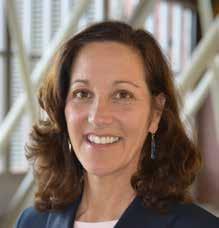


REGION - As we age, we might experience more aches and pains, and it is not all that uncommon to worry that there may be something seriously wrong. Even with reassurance from your medical professional and insistent test results that conclude you are fine; you may suffer from health anxiety.

Health anxiety is a real thing and is a condition that causes healthy people to worry that they are ill, even when their symptoms are minor or non-existent. This fear can actually interfere with daily living. It’s a disorder that has also been referred to as hypochondria.
Common causes
A person’s anxiety can be increased at times by their real symptoms. Headaches caused by stress, for example can lead a person with health anxiety to fear the worst like maybe they have a brain tumor. The person is easily alarmed about their health.
“Aging gracefully can be challenging, which can increase as we
see our minds and bodies age,” said Debbie Mendleson, a licensed social worker in Salem. “The primary strategy to combat anxiety is ‘self-care.’ That may sound too simplistic but given the demands of our society, many run themselves ragged while pushing through their days.”
“When trying to deal with anxiety, getting adequate sleep is of the utmost importance,” she emphasized. “Another strategy is filling in daily periods to pause and take a break, allowing the brain to relax. Eating a clean diet and getting exercise can also be helpful.”
There are signs of health anxiety, what to be mindful of and when to seek the help of a professional. Some of these signs might include that you are constantly online researching health information (such as symptoms and illnesses), you worry that you might be suffering from a disease or illness after reading an article about it, you have no symptoms but still fear that you are sick, and your doctor has reassured you that you are not suffering from any illness but you are still quite anxious and not convinced.
“I worried, constantly, that I was dying from some ailment. It wasn’t until this fear became consuming that I addressed it with my primary care physician. He directed me to a therapist, which was life-changing,” said Laura W. of Worcester.
At this point, your fears about your health are consuming and interfering with your daily life. Once you can recognize this, it is time to take control and seek out professional help. Coping with health anxiety takes time but can be managed and is treatable. Some suggest relaxation
With over 50 years experience in the real estate industry, Jo-Ann and Diane are your winning team to help you “make the next move”.

Let’s discuss how we are helping baby boomers find their retirement niche and get rewarded at the same time.
Health anxiety is a real thing and is a condition that causes healthy people to worry that they are ill, even when their symptoms are minor or non-existent.
exercises like meditation, spending time outdoors in nature, exercise, listening to soft music and even something as simple as lighting a candle.

“Another strategy is using Cognitive-Behavioral Therapy,” said Mendleson. “This allows the client to better understand their thinking process and then helps in extinguishing negative thought patterns. In addition to CBT, a client can explore their fears with a therapist whose goal is to normalize the anxiety, thereby taking the sting out of a client’s stressors.”
“People with health anxiety, for the most part tend to fear severe illness, such as HIV, cancer, or dementia. They worry far less about strep throat, twisting their ankle or getting a cold,” said Dr. Timothy Scarella, instructor in psychiatry at Harvard Medical School, in an article published by Harvard Health Publishing. “This fear that they have might lead them to waste hours in the doctor’s office, seek out unnecessary testing and spend days consumed by worry,” said Scarella. “It’s not only their own health that people with health anxiety may focus on. Some people also worry excessively about their children’s health.”



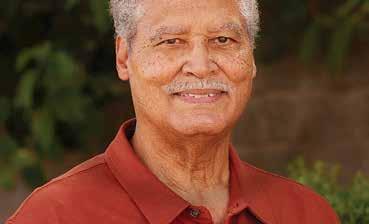

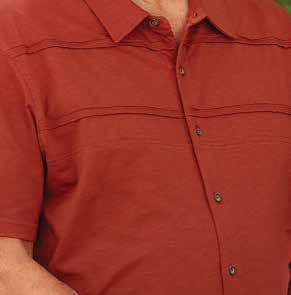
It is also important to note that someone suffering from health anx-


iety might be so fearful about what could be discovered that they avoid going to the doctor altogether. This can happen even if they are not feeling well or simply need a routine physical. The danger there is that a real health issue might be ignored and become more serious if treatment is delayed.
To a person not inflicted with health anxiety, this might seem extreme; however, for the person who has this disorder, their worry is not controllable and it can be excessive. Not only does it affect their lives, but it affects their family and friends as well.


